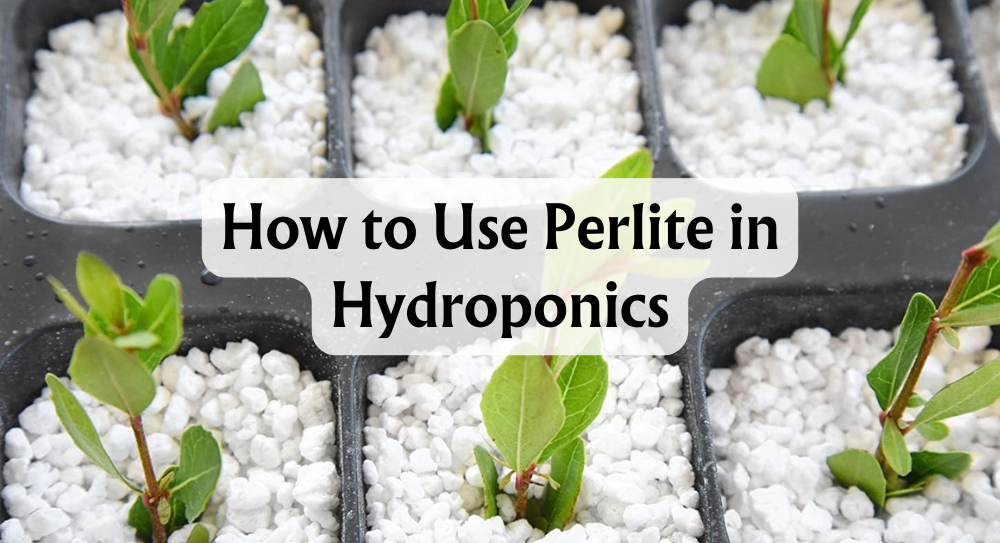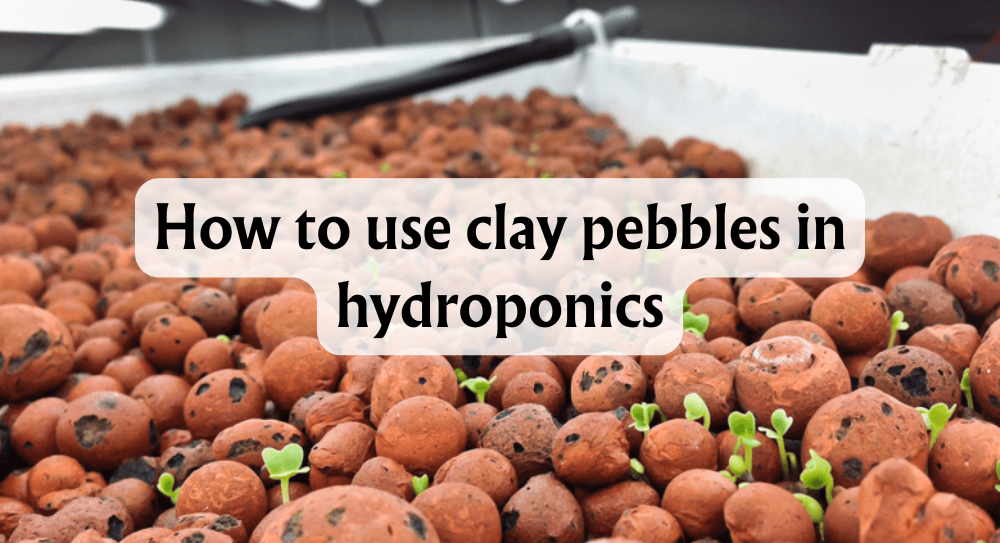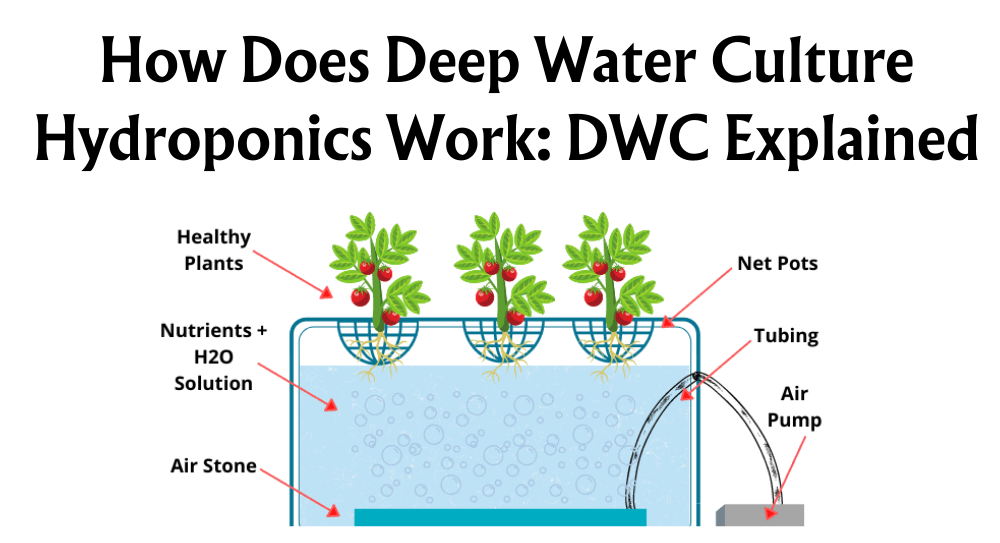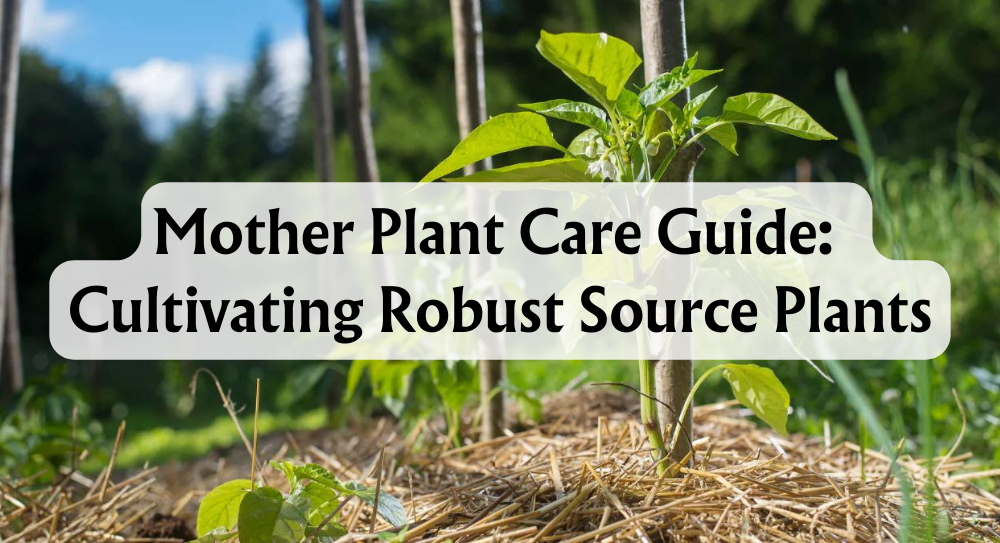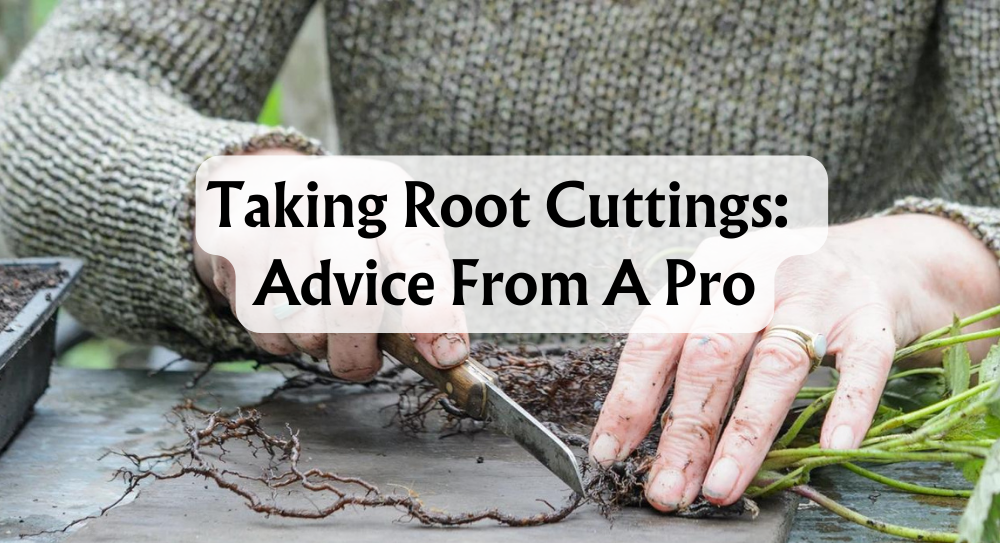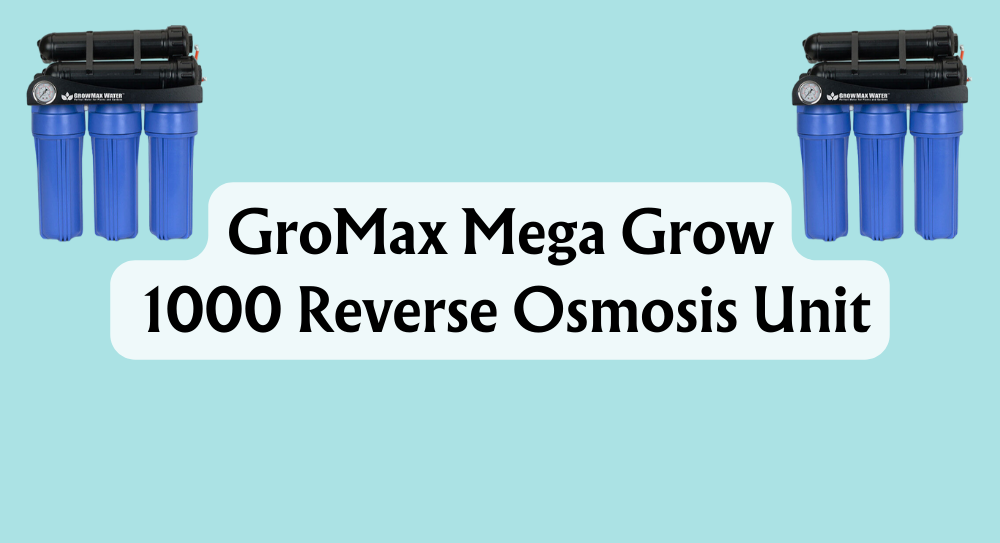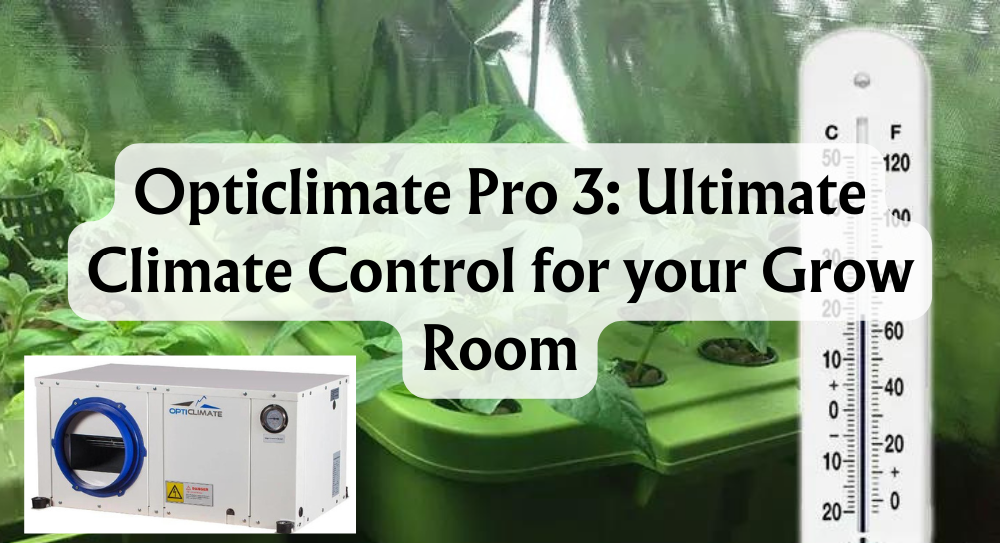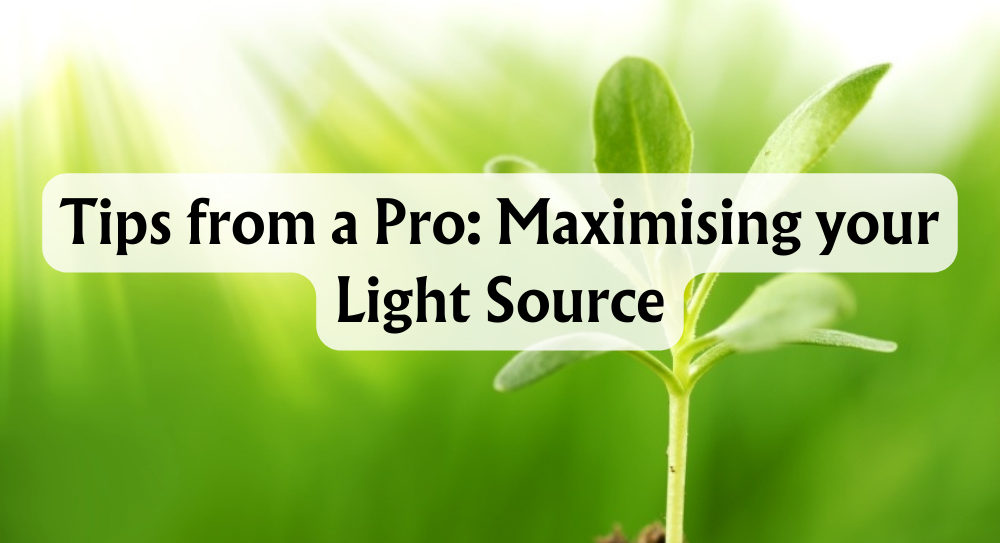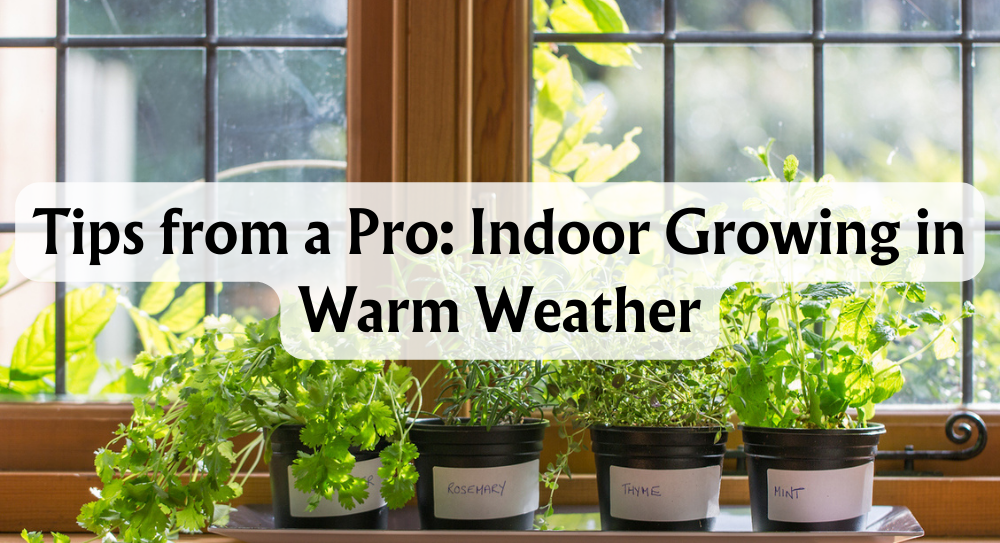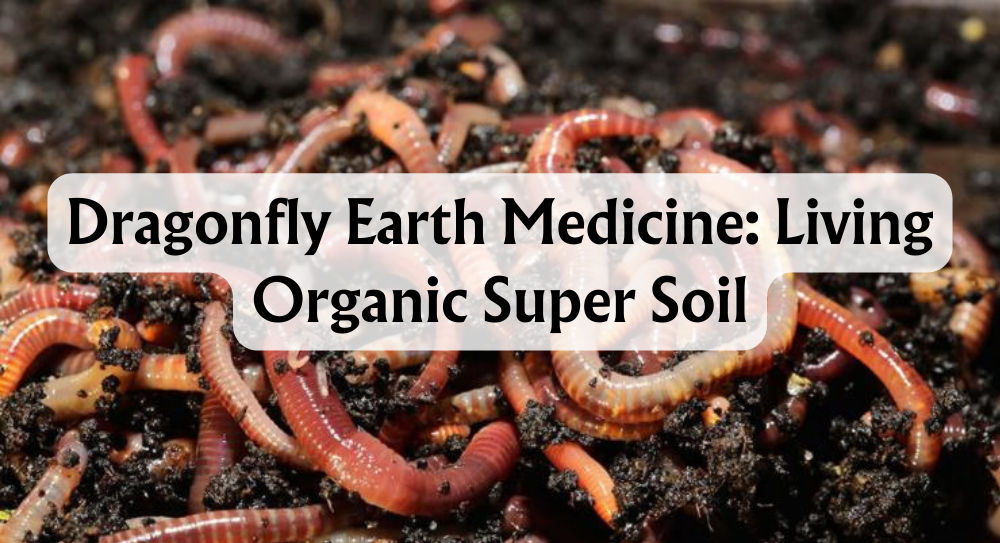Do You Need Soil for Hydroponics?
Do you really need soil to grow your plants? Hydroponics might just make you rethink everything you know about gardening. In hydroponics, we grow plants without soil, using mineral nutrient solutions in water to feed them. This soil-free method has its roots in ancient gardening techniques, and it’s making a big comeback due to its efficiency and versatility.
Let's compare traditional soil gardening to hydroponics. Unlike conventional methods, hydroponics allows us to grow plants in an inert medium like rock wool or directly in nutrient-rich water. This innovation not only saves space but also cuts back on water usage and reduces the need for chemical pesticides. For urban gardeners, or those with limited space, hydroponics offers a fantastic alternative.
So, do you need soil for hydroponics? Absolutely not. As we dive into this post, we’ll explore how hydroponics works, why it’s beneficial, and what challenges come with it. We’ll also guide you on which plants thrive in this system and provide tips for setting up your own hydroponic garden.
Key Takeaways
- Hydroponics means growing plants without soil.
- This method uses nutrient solutions to feed plants directly.
- It's ideal for efficient space and water usage.
The Essentials of Hydroponics
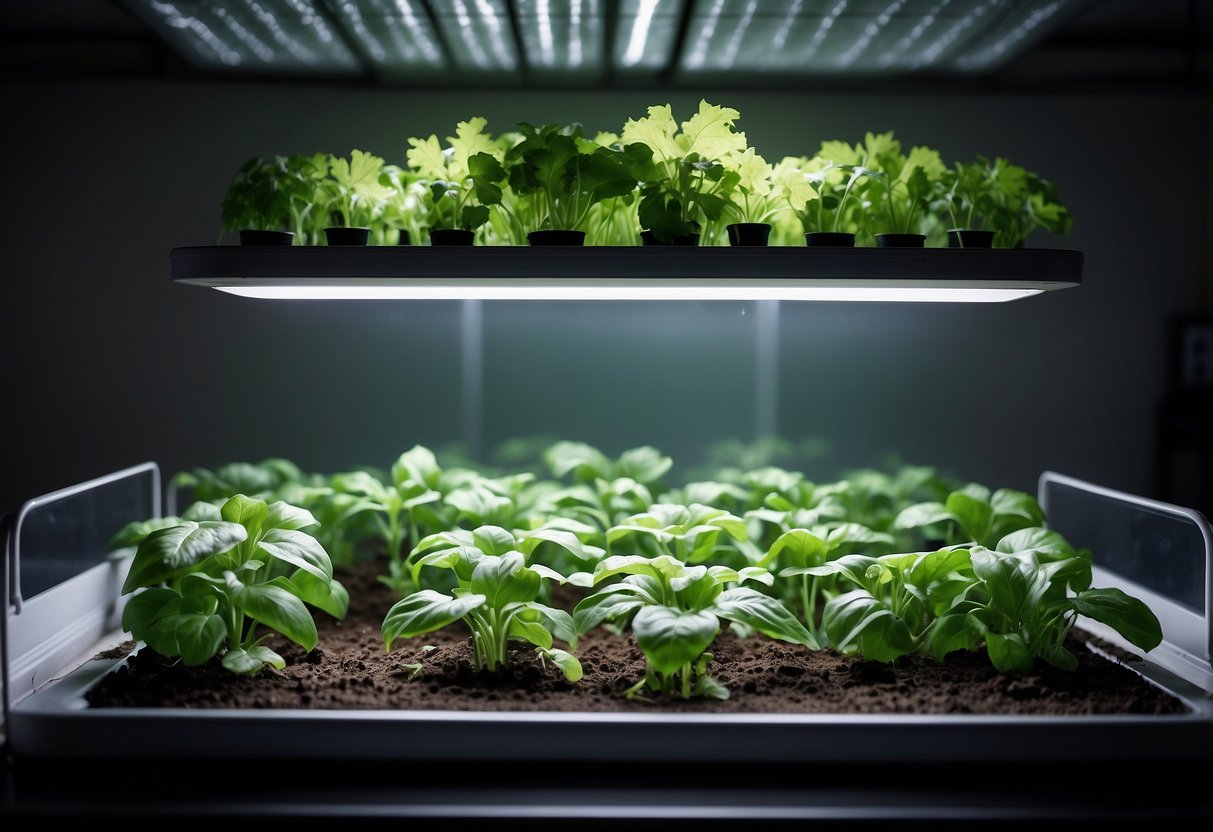
Hydroponic growing is a fascinating method that eliminates the need for soil. By using water-based mineral nutrient solutions, we can control and optimise the growth environment, resulting in faster and more efficient plant growth. We'll cover what hydroponics is, how it works, and the various systems you can use.
What Is Hydroponics
Hydroponics is a method of growing plants without soil. Instead, plants thrive from nutrients in the water. This method can be traced back to ancient cultures, yet it has evolved to become a sophisticated way to cultivate plants in modern settings like greenhouses and urban gardens.
The key to hydroponics is the nutrient solution. By carefully balancing water pH and nutrients, we can provide the optimal environment plants need to grow. This controlled setting helps avoid common soil-related issues like pests and diseases. Advantages: faster growth, efficient use of resources, and the ability to grow plants in unconventional spaces.
How Does Hydroponics Work
The process begins with choosing the right plants suitable for hydroponic systems. Seeds or cuttings are placed in a growing medium like rock wool, clay pebbles or coco coir, which supports the plant roots. Growing media options: perlite, vermiculite, or starter plugs can be used based on plant needs.
Next, the nutrient solution is prepared. This involves mixing water with the essential minerals plants need for growth and maintaining an optimal pH level. The solution is then circulated around the plant roots using pumps, ensuring they get adequate oxygen and nutrients they need.
Temperature, light, and oxygen levels are critical in hydroponic techniques. For instance, keeping water temperatures between 18-21 degrees Celsius helps maintain dissolved oxygen levels. Regularly monitoring these factors ensures a thriving hydroponic garden.
Hydroponic Systems Breakdown
There are several types of hydroponics systems, each with unique benefits:
- Deep Water Culture (DWC): Plants float on a nutrient solution with roots submerged, highly oxygenated by air stones and pumps.
- Nutrient Film Technique (NFT): A thin film of nutrient solution flows over plant roots, providing continuous feeding and oxygenation.
- Ebb and Flow: The nutrient solution floods the growing area periodically, then drains, allowing the root system to get both water and air.
- Drip System: Delivers nutrient solution directly to the plant roots via drip emitters, suitable for various plant sizes.
- Aeroponics: Roots hang in the air and are misted with nutrient solution, providing maximum oxygen exposure.
- Wick System: Utilises capillary action where nutrient solution is drawn up to plant roots via a wick, ideal for small-scale gardens.
Each system has its intricacies, but the principles remain the same: providing balanced nutrients, maintaining proper conditions, and ensuring root health for optimal growth.
Growing Without Soil: A Two-Sided Coin

Growing plants without soil, commonly known as hydroponics, can bring substantial advantages. Yet, it also presents some challenges that are important to consider for anyone delving into this method of gardening.
The Benefits of Growing Without Soil
Firstly, hydroponics uses up to 90% less water compared to traditional soil-based gardening. This water efficiency is due to the recycling of water and nutrient solution in closed systems. This is a significant advantage for regions experiencing water shortages.
Secondly, we save space with hydroponics. Plants can be grown in higher densities, vertically stacked, and even cultivated indoors or on rooftops. This makes it an attractive option for urban environments with limited growing space.
Additionally, hydroponics reduces the time needed for garden maintenance. Weeding, tilling, and regular pest control are largely unnecessary. Furthermore, plants tend to grow faster and yield more due to the direct delivery of nutrients.
Hydroponics can also save money in the long run. The initial costs might be high, but the reduction in expenses related to soil, fertilizers, and pesticides, combined with higher quality and value of produce, can balance things out.
Lastly, hydroponics has a positive impact on the environment. It reduces soil erosion, water pollution, and greenhouse gas emissions, promoting sustainability and food security. Plus, it uses fewer chemicals, contributing to a cleaner and healthier ecosystem.
The Drawbacks to Growing Without Soil
On the flip side, high initial costs can deter many from starting a hydroponic garden. It involves purchasing equipment, materials, and often requires expertise. Systems may also need electricity, pumps, timers, and sensors, which adds to the expense.
Maintenance in hydroponics is higher compared to soil gardening. Regular monitoring of water and nutrient levels, pH and EC (electrical conductivity), and climate conditions is necessary. This constant need for attention can be demanding.
Hydroponic systems are also more susceptible to risks. System failures, power outages, water leaks, and nutrient imbalances can devastate your garden. Prevention and backup systems are crucial to mitigate these risks, which adds another layer of complexity.
There’s also the challenge of limited plant diversity. Hydroponics is more suitable for leafy greens, herbs, and some fruits. Root vegetables, grains, and trees don't thrive as well in a soilless environment, limiting what we can grow.
Finally, growing without soil can feel less natural. The absence of a soil microbiome might affect the natural flavours of the plants. Moreover, it can lack the traditional aesthetic appeal and may not satisfy those seeking a more organic gardening experience.
Plants and Nutrients in Hydroponic Growing
In hydroponics, plants grow without soil, but they need specific conditions to thrive. Let's dive into what types of plants are suitable and the science behind hydroponic nutrients.
What Plants Are Suitable for Hydroponics
Choosing plants depends on factors like the type of hydroponic system and the plant's size. Leafy greens and herbs are excellent choices, mainly because they are easy to grow hydroponically and have quick harvest times. Yes, hydroponics can be a way of growing food without soil.
Leafy Greens: Lettuce, spinach, and kale grow exceptionally well in hydroponic systems. They require less space and have minimal nutrient needs.
Herbs: Basil, mint, and parsley are aromatic and versatile. They flourish in nutrient-rich solutions and can be grown year-round.
Fruits and Berries: Tomatoes, peppers, and strawberries need larger systems and careful nutrient management. They are colourful, juicy, and nutritious.
Flowers: Orchids and roses are beautiful but may require more specialised setups.
The best systems for these plants include Nutrient Film Technique (NFT) for greens and herbs, and Deep Water Culture (DWC) or Drip Systems for larger fruiting plants.
The Science of Nutrients
Hydroponic plants need a balanced mix of water and nutrients to grow healthily. Key nutrients include nitrogen, phosphorus, and potassium. These macronutrients are vital for overall growth, root development, and fruit production.
Micronutrients: Calcium, magnesium, iron, zinc, copper, boron, manganese, and molybdenum are essential but in smaller amounts. They support cellular functions and stress resistance.
Managing pH levels is crucial. Most plants thrive at a pH between 5.5 and 6.5. An optimal pH ensures nutrient absorption and prevents deficiencies.
Nutrient solutions should be mixed carefully, following manufacturer guidelines. It's crucial to monitor and adjust the nutrient composition regularly to meet the changing needs of plants at different growth stages.
By understanding these elements, we can create a thriving hydroponic garden tailored to our favourite plants.
Building a Hydroponic Garden

Creating and upkeeping a hydroponics garden involves selecting the right materials and closely monitoring and controlling your system. Ensuring a balanced and thriving environment for your plants will lead to healthier, more productive growth.
Choosing the Right Materials
First, let’s talk containers. You need an opaque reservoir to hold the water and nutrient solution. This helps prevent algae growth. Next, think about your grow tray; use a medium like rockwool, perlite, vermiculite, or coconut coir work well for holding plant roots in place.
Lights are crucial. LED grow lights are energy-efficient and provide the full spectrum of light your plants need. A simple timer can automate light cycles. Ensure your nutrient mix is appropriate for the plants you're growing – different plants have different needs.
Don’t forget an air stone connected to an air pump to aerate the nutrient solution. pH meters and temperature controls help you maintain the ideal growing environment.
Monitoring and Controlling Your System
Keeping a close eye on your hydroponic garden is essential. Start with daily checks of pH and nutrient levels using your pH meter and EC meter. Plants typically thrive with a pH between 5.5 and 6.5. Adjust weekly, or as needed.
Temperature control is key. Maintain water temperature between 18°C to 24°C. Too cold, and roots can’t absorb nutrients. Too warm, and you risk root diseases.
Automation tools such as timers for lighting and nutrient delivery systems can save time and ensure consistency. Regularly inspect your plants for signs of stress or disease. Healthy roots should be white or light tan.
By staying proactive, we can ensure our hydroponic systems are providing the best possible environment for our plants to flourish. Remember, consistent monitoring and minor adjustments can make all the difference in achieving a thriving hydroponic garden.
Seeding and Propagation

Ready to get our hands a bit wet? Let's dive into seeding and propagation in hydroponics!
Supplies You’ll Need:
- Hydroponic trays – Essential for germinating seeds
- Growing medium – Starter plugs or Rockwool cubes work great
- Seeds – Pick your favourite plants
- Water and nutrient solution – Keep those seedlings happy
- pH tester – Ensure our water is perfectly balanced
- Light source – Give our seeds plenty of light to grow
Step-by-Step Guide:
Prepare the Growing Medium:
Soak the starter plugs in water to make them nice and moist. If you’re using Rockwool starter cubes, do the same.
Selecting and Placing Seeds:
Drop 2-3 seeds into each starter plug or cube. This boosts our chances of getting at least one robust seedling per plug.
Placing in Hydroponic Trays:
Once seeded, place the plugs or cubes into our hydroponic trays. Make sure they've got enough room.
Setting Up the System:
Air Pump and Stone Setup:
Connect the tubing to the air pump and airstone. Place the air stone in the water reservoir and plug in the pump.
Lighting: Ensure our seedlings get ample light. A good light source helps in photosynthesis, supporting strong and steady growth.
Monitor pH Levels: Keep an eye on the water’s pH with a pH tester. Levels should be between 5.5 and 6.5 for optimal growing conditions.
Growth and Care:
Daily Check-ins:
Look after our seeds and seedlings daily. Ensure they remain moist and support their growth with the right amount of light. Fingers crossed for a healthy harvest!
Seeding and propagating in hydroponics might seem tricky, but with these steps, we’ll be growing plants like pros in no time.
Troubleshooting Common Hydroponic Issues
Let's dive into some common problems we might face with our hydroponic systems and how to fix them.
Nutrient Deficiencies: Notice yellowing leaves? That's our plants shouting for more nutrients. We need to regularly check our nutrient solution to ensure it has the right balance. A good pH level (usually between 5.5 and 6.5) is crucial here.
Disease and Root Rot: A wilting plant or a foul smell often indicates root rot or disease. Maintaining a clean system is key. Regularly inspect and trim the roots, removing any dark, slimy parts. Using sterile tools can prevent the spread of pathogens.
Pests: Despite no soil, pests can still invade our hydroponics. Aphids, spider mites, and whiteflies are common culprits. Using natural predators like ladybirds or organic insecticidal soap can help keep these pests at bay.
Clogging and Blockages: Drip systems are prone to clogging. Regular cleaning of tubes and filters can prevent this problem. If we spot any blockage, flushing the system with water often clears it right up.
Water Quality: Poor water quality can harm our plants. High chlorine levels, wrong pH, or excessive minerals can stunt growth. Regularly testing and adjusting our water ensures our plants get clean, safe water.
Maintenance: Regular maintenance, like cleaning tanks and checking pumps, keeps our system running smoothly. It's like giving our hydroponic system a little TLC.
By keeping these tips in mind, we're well on our way to a successful hydroponic garden.
The Cost of Going Hydroponic
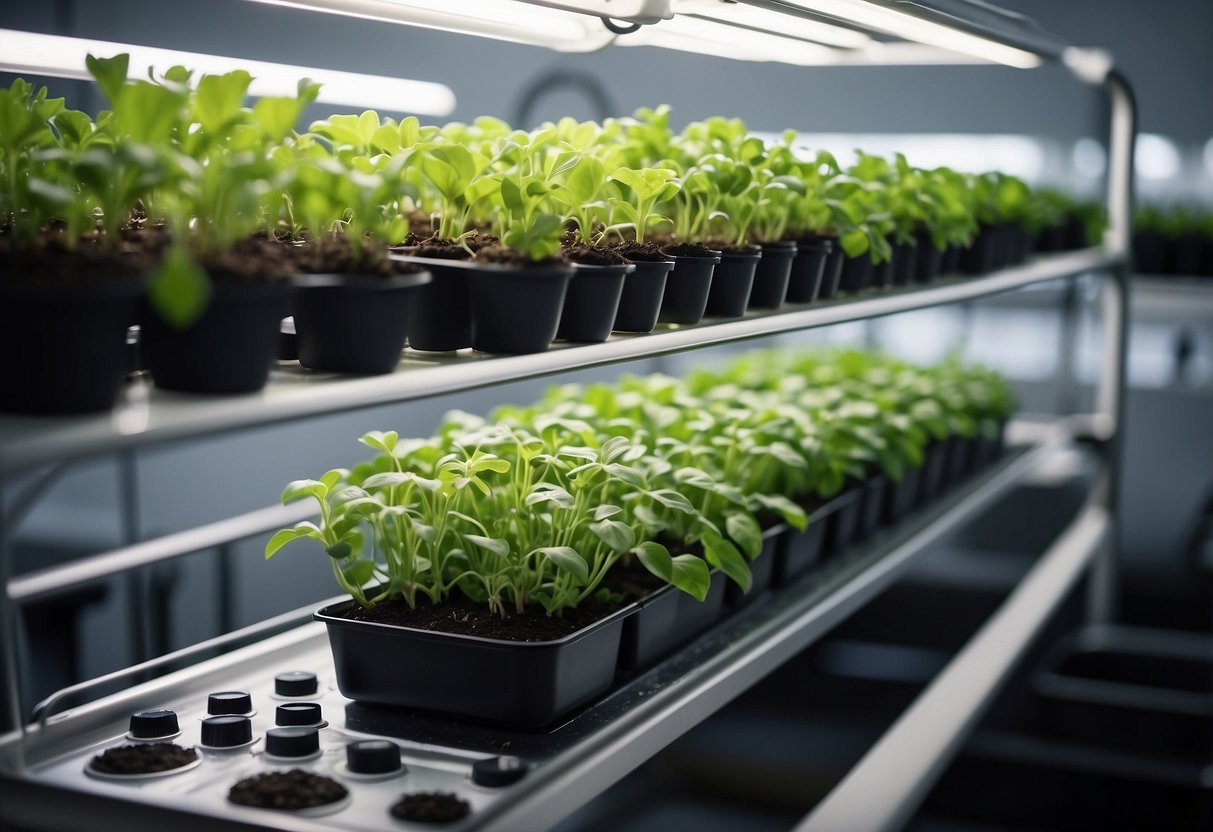
Let's talk money, shall we? Setting up a hydroponic garden can seem a bit pricey, but trust us, it’s well worth the investment.
First, the initial setup varies quite a bit. You could spend as little as £40 on a simple wick system. For something more advanced, like an NFT system with water pumps and growing channels, you might be looking at £160 or more.
Breakdown of Initial Costs:
| Item | Cost Range |
|---|---|
| Simple Wick System | £8 - £40 |
| Basic Hydroponic Kits | £40 - £160 |
| Advanced NFT System | £160 - £240 |
Now, maintenance costs. Electricity is a biggie since most systems rely on it. On average, electricity in the US costs around 12 cents per kilowatt-hour. We need to factor this in, especially for larger systems.
Electricity isn't the only recurring cost. Nutrients and water – though relatively inexpensive – also need to be replenished. Keep a small budget for these.
There's an upside. Hydroponics tends to give a faster growth rate (30-50% quicker) and increased yield (30% more). Imagine having fresh produce on hand, super quick!
On the benefit side, we're not only getting fresh produce but also saving on grocery trips. Plus, there’s the satisfaction of watching our plants thrive.
Regular Maintenance Costs:
- Electricity: Variable (around 12 cents per kWh)
- Nutrients: Budget-friendly
- Water: Minimal cost
In summary, while going hydroponic requires an initial investment and ongoing costs, the rewards of quicker growth, higher yields, and personal satisfaction make it a worthwhile endeavour. Let's dive into the world of soil-free gardening!
Eco-Friendly Hydroponics
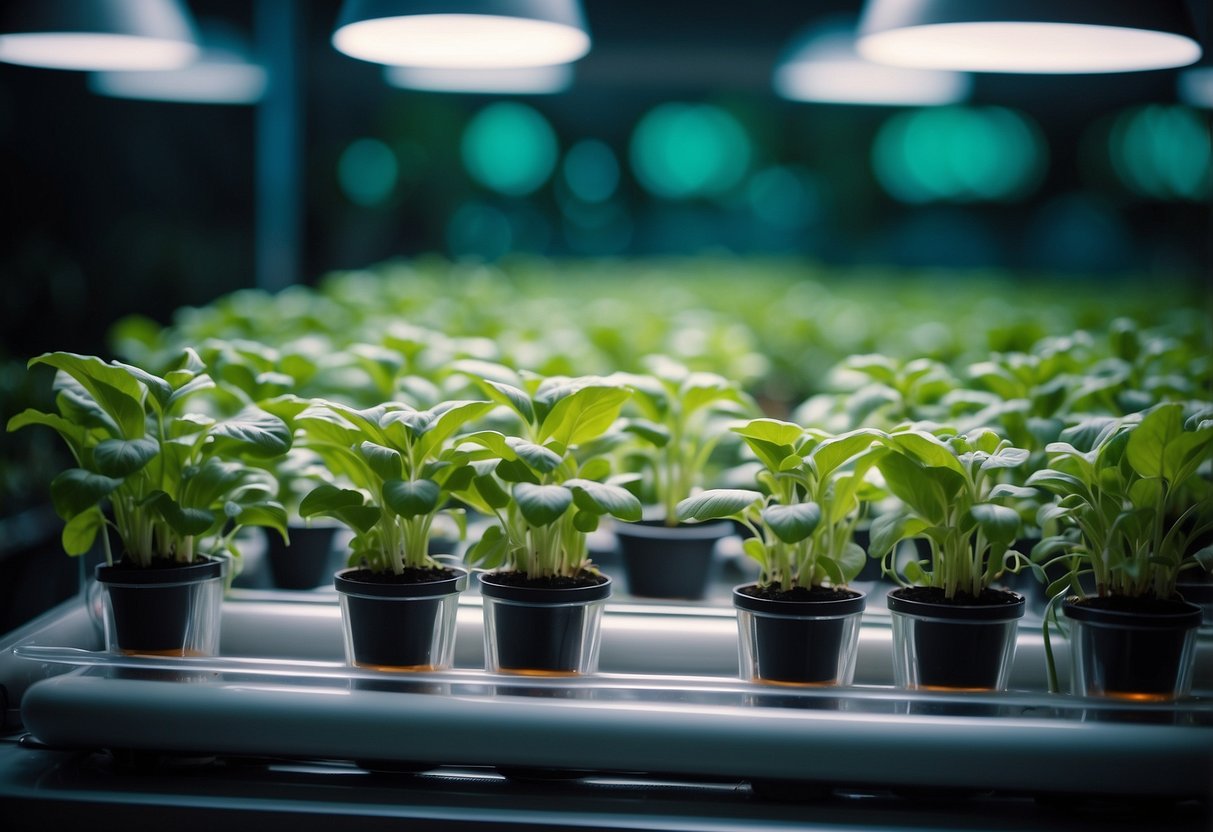
Hydroponics is a fantastic way to garden sustainably. This soil-free technique is not only innovative but also combines several environmental benefits, making it a green thumb's dream.
Firstly, water efficiency is a huge win for hydroponics. Traditional soil gardening can be pretty thirsty, but with hydroponics, we use up to 90% less water. This is because the water gets recirculated in the system, rather than lost in the soil.
Imagine a garden that uses fewer resources while providing more produce. That’s smarter, right? Additionally, space-saving is another benefit. Since our plants don’t need soil to thrive, we can grow vertically, ideal for urban settings.
Also, when we use hydroponics, we’re reducing our environmental footprint. There's no need for heavy machinery to till the land, which means less carbon emissions. Plus, less soil erosion and fewer pesticides contribute significantly to soil health outside of our hydro garden.
Let’s not forget the energy efficiency. With some hydroponic setups, we can even harness renewable energy sources like solar panels to power our systems. It's a win-win situation for both our plants and the planet.
Moreover, hydroponic systems allow for year-round growing, independent of weather conditions. This not only boosts our green credentials but also ensures we have fresh produce all year.
So there you have it! Hydroponics isn’t just a modern marvel but also an eco-friendly choice that promises sustainability. Our planet and plants will thank us.
Conclusion
As we've explored, hydroponic gardening allows us to grow plants without the need for soil. This innovative method offers many benefits. Plants access nutrients directly through a water-based solution, promoting faster and more efficient growth.
One key advantage of hydroponic gardens is that they thrive in space-constrained environments. A small balcony or an urban apartment can house a lush hydroponic garden.
Despite the benefits, there are some challenges and costs. Setting up hydroponic systems can be pricey. From LED lights to water and nutrient solutions, the initial investment can be high.
Are you curious about trying hydroponics? Start with easy plants like basil, lettuce, or spinach. These thrive well in hydroponic setups.
For a deeper dive, consider researching different hydroponic systems like:
- Nutrient Film Technique (NFT)
- Deep Water Culture (DWC)
- Aeroponics
Each system has unique advantages and limitations. Understanding these will help you make informed decisions for your hydroponic garden.
Have experience or tips to share? We'd love to hear your thoughts and feedback. Let's keep the conversation going and enhance our hydroponic gardening adventures together!







 Store Locator
Store Locator

